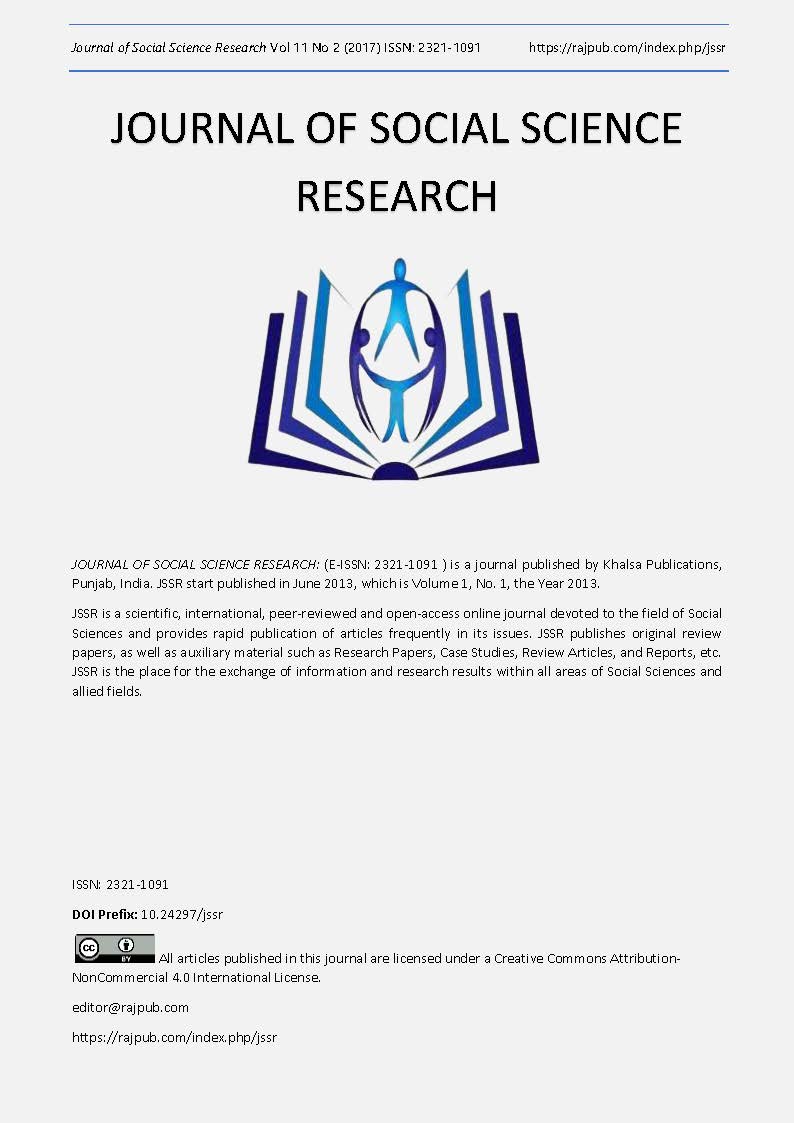Green economic efficiency and influencing factors analysis of the Yangtze river economic belt in China
DOI:
https://doi.org/10.24297/jssr.v11i2.6049Keywords:
Green Economic Efficiency, DEA, Yangtze River Economic Zone, TobitAbstract
For a long time, China's economic development ignore the constraints of resources and environmental costs but one-sided pursue GDP. In 2014, the State Council issued a document to develop the Yangtze River economic zone into a "green ecological corridor". The green development of the Yangtze River economic zone is of high-profile. This paper attempts to consider the resource and environmental factors into the economic growth, establish a reasonable evaluation of national and regional economic performance of the green economic efficiency indicators. It can be seen from the DEA estimates that the average green economic efficiency of the Yangtze River economic zone per year is more than 0.9. The Tobit panel model shows that there are differences in the factors affecting the green economic efficiency of different area. But overall, there is a "inverted U-type" relationship between green economic efficiency and per capita GDP, urbanization has a positive effect on green economic efficiency but not significant. Besides, foreign direct investment, structure factors, level of science and technology have a negative effect. According to the results of the inspection, this paper puts forward some policy suggestions on weighing the relationship between economic growth and environmental protection, taking a new road to industrialization and narrowing regional differences.
Downloads
References
[2] Charnes A, Cooper W W, Rhodes E. Measuring the efficiency of decision making unitsâ€, European Journal of Operational Research[J]. 1978,2(6) :429-444.
[3] Wang Zhigang, Gong Liutang, Chen Yuyu. China's Regional Differences in Technical Efficiency and the Decomposition of Total Factor Productivity Growth (1978-2003)[J]. Social Sciences in China.2006(2):55-66. (In Chinese)
[4] Hailu. A, Veeman.T.S. Non-parametric productivity analysis with undesirable outputs: an application to the Canadian pul Pand paper industry [J]. American Journal of Agricultural Economics. 2001,83 (3):605-616.
[5] QIAN Zhengming, LIU Xiaochen. A Study of regional Differences and Convergence of Green Economic Efficiency in China[J]. Journal of Xiamen university (Arts&Social Sciences).2014,1:110-118. (In Chinese)
[6] QIAN Zhengming, LIU Xiaochen. Regional Differences in China’s Green Economic Efficiency and Their Determinants[J]. China Population, Resources and Environment. 2013.7(23):104-109. (In Chinese)
[7] Liu X.C, Qian Z.M. Study on energy saving with Chinese regional energy-economic efficiency analysis based on the SBM model. Advanced Materials Research. 2013(648): 247-250.(In Chinese)
[8] Wang Bing, Liu Guangtian. Energy conservation and emission reduction and China’s green economic growth-Based on a total factor productivity Perspective[J]. China Industrial Economics.2015,5(5):57-69. (In Chinese)
[9] Chung, Y. H, R. Fare and S. Grosskopf,Productivity and Undesirable Outputs: A Directional Distance Function Approach[J]. Journal of Environmental Management. 1997,51: 229-240.
[10] Yang Long, Hu Xiaozhen. Analysis on regional difference and convergence of the efficiency of China’s green economy based on DEA[J]. Eeconomist.2010(2):46-54. (In Chinese)
[11] Wang Xiaoyun, Wei Qi, Hu Xianhui. Comprehensive Evaluation of Cities’ Green Economy Efficiency and Spatial and Temporal Differentiation in China: Based on the DEA-BCC and Malmquist Model. Ecological Economy, 2016,3(32):40-45.
[12] Yan Pengfei, Wang Bing. Technical. Efficiency, Technical Progress &Productivity Growth: An Empirical Analysis Based on DEA[J]. Economic Research Journal. 2004(12):56-62. (In Chinese)
[13] Yuan Peng, Cheng Shi. Examining Kuznets Curve in Environmental Efficiency of China’s Industrial Sector[J]. China Industrial Economics.2011,2(2):79-88. (In Chinese)
[14] Wang Jun, Geng Jian. Analysis and Empirical Study on China Green Economic Efficiency[J] On Economic Problems.2014(4):52-55. (In Chinese)
[15] Wang Bing, Wu Yanrui, Yan Pengfei. Environment Efficiency and Environmental Total Factor Productivity Growth in China’s Regional Economies[J]. Economic Research Journal.2010(5):95-109. (In Chinese)
[16] Wang Bing, Huang Renjie. Regional Green Development Efficiency and Green Total Productivity Growth in China: 2000-2010: Base on Parametric Metafrontier Analysis[J]. Industrial Economic Review. 2014(1):16-35. (In Chinese)
[17] Shan Haojie. Reestimating the Capital Stock of China:1952-2006. The Journal of Quantitative & Technical Economics.2008(10):17-31. (In Chinese)
[18] Zhou P., Ang B.W., Poh K.L. A survey of data envelopment analysis in energy and environment studies[J].European Journal of Operational Research,2008(189): 1-18.
Downloads
Published
How to Cite
Issue
Section
License
 All articles published in Journal of Advances in Linguistics are licensed under a Creative Commons Attribution 4.0 International License.
All articles published in Journal of Advances in Linguistics are licensed under a Creative Commons Attribution 4.0 International License.




